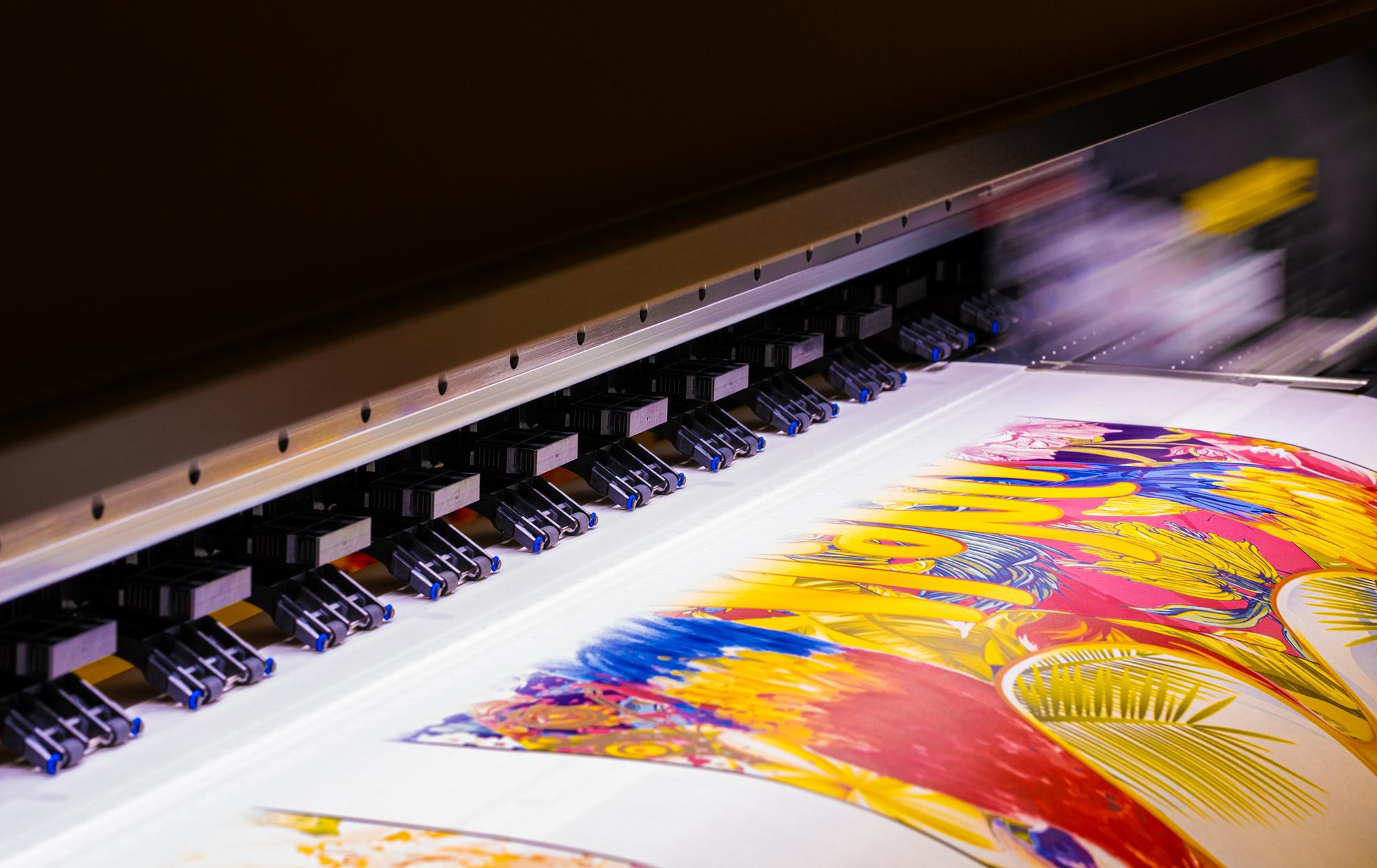In a world characterized by rapid technological development, and the wide spread of the Internet and smart devices, talking about paper printing may seem outdated and forgotten. But let’s take a moment to revisit this historical craft and its importance in the current era.
In this article, you will discover the journey of paper printing, and learn about the types of technologies used and their development, we will also discuss the importance of printing in the digital age and the challenges and opportunities of printing in the eleventh century.
Table of Contents
ToggleHistory of paper printing
The history of paper printing extends back to ancient periods and brought with it a revolution in the transfer of knowledge through the ages. Paper was invented in China in the eleventh century when wood sheets began to be used to convey texts and images.
In the eleventh century, woodblock printing was invented, and the technique spread to Europe. In the fifteenth century, the German Johannes Gutenberg invented a movable horizontal stacking printer, which facilitated the printing process and made it more accurate.
With the spread of Gutenberg printing in the fifteenth century, culture and knowledge developed in Europe and the world, and since then, printing techniques have evolved and different methods of printing have emerged such as offset printing, flexographic printing, and digital printing.
In the modern era, and with the continuous technological development, paper printing continues to play a vital role in documenting science and culture and spreading knowledge, despite the world’s trend towards digital technology.
What are the types of techniques in paper printing?
- Offset printing: The basic technique used in printing papers in large quantities, and it depends on transferring ink from the plate to the paper to be printed. It is used for large and medium-format paper printing.
- Flexographic printing: This technique is used to make soft and flexible objects. It is based on a flexible roller made of rubber to transfer the ink to the desired surface.
- Digital printing: It is a printer that prints images and texts with high accuracy using digital technology. It is used in advertising, commercial and industrial printing. This technology enables printing at the same resolution and quality for each copy of the document.
- Thermal ink printing: used in thermal and photographic printing.
- Laser printing: It is used in fast and accurate printing, and it is the use of a laser to engrave the image on paper.
- Thermal printing: It is used in printing on sensitive medical instruments and relies on heat technology to create images and graphics, as it relies on heating certain materials to transfer the image to paper.
- UV printing: UV rays are used to dry the ink and transfer the image to the paper.
- Screen printer: It uses perforated screens or dies to transfer an image to paper. This technology is used to create various graphics and logos.
- Silk-screen printing: It is used in making paintings, posters, and fabrics, where the ink is transferred by means of a perforated screen.
- 3D printing: It is used to create three-dimensional objects by putting together successive layers of materials.
The importance of paper printing in the digital age
- Ease of use: Many people prefer paper printing for work and study, computers and tablets can reduce the need for paper printing. However, sometimes paper is better for certain uses. Some, moreover, many people suffer from eye strain due to heavy computer use. For reasons of personal health as well as preference, paper is often preferred.
- Paper printing offers perks digital screens can’t always match: If someone visits your office, and you want to give them information to take with you, they’re still using paper, and yes, you can email it to them. But email is often lost or not read at all. Moreover, not everyone has access to a computer at home. For a doctor’s office that needs to provide important information about medications and health conditions, paper instructions are essential for sharing information. Paper is also better when it comes to brochures, business cards, and other handy marketing materials that can be easily picked up and pocketed for later viewing.
- Advertising and Marketing: Print advertising is still widely used in marketing campaigns, such as flyers and posters. Paper printing can be an effective way to attract an audience and market your products and services.
- Privacy and Security: In some cases, individuals prefer to use hard copies to keep some personal or sensitive information private. It may be difficult to penetrate paper, that is, to penetrate paper printing, compared to digital information, which can be vulnerable to electronic penetration.
- Record Keeping: Paper printing is an effective way to retain important information and legal records. Some organizations may be legally required to keep hard copies of certain documents for certain purposes.
- Education and Research: Students and researchers still use books and paper references as a source of knowledge. Paper printing helps keep information organized and allows people to make notes and notes directly on paper copies.
We can say that despite the tremendous progress in digital technology and the increasing reliance on electronic devices, the importance of printing in a variety of activities and industries in the digital age cannot be denied.
Challenges of paper printing in the twenty-first century
- Technological development and competition: With continuous technological development, new technologies are introduced in the field of printing that make it more efficient and of higher quality. This puts pressure on traditional companies to modernize their equipment and use more advanced technologies to keep pace with development and competition.
- Cost and speed: With the development of technology, paper printing becomes more expensive depending on the size and technology used, however, there is still a challenge in striking a balance between cost and quality to meet customer needs.
- Reliance on paper and the environment: The continuous reliance on paper and consumption of natural resources in the printing industry is an environmental challenge. The pressure is growing to adopt environmentally friendly methods and to use recycled materials that are less harmful to the environment.
- Quality and Variety: Customers today are looking for high-quality and distinctive designs in printing, and this results in improved print quality and a variety of options to meet customer needs.
- Dealing with Demand Changes: The modern era requires rapid adaptation to changes in print demand and content, as users’ needs can change rapidly and require immediate response by printing companies.
- Switching to digital media: With the increasing use of smart devices and digital technology, many people prefer reading content through screens rather than on paper. This means that the demand for paper printing may decrease.
In conclusion, we find that paper printing is an art and a science that has accompanied humans for ages, despite the challenges it faces in the twenty-first century, it still has its own value and place in the present world.
Paper printing is an art that combines technology and creativity, and a platform for embodying ideas and feelings in unique ways, as printing offers an aesthetic experience to the reader, inspiring feelings and enhancing integration with the content.
No matter how technology advances and habits change, printing will still have its own charm, and it will remain a popular choice for many. While we are witnessing amazing developments in the digital world, we will not forget the paper printing that carries the spirit of creativity.




